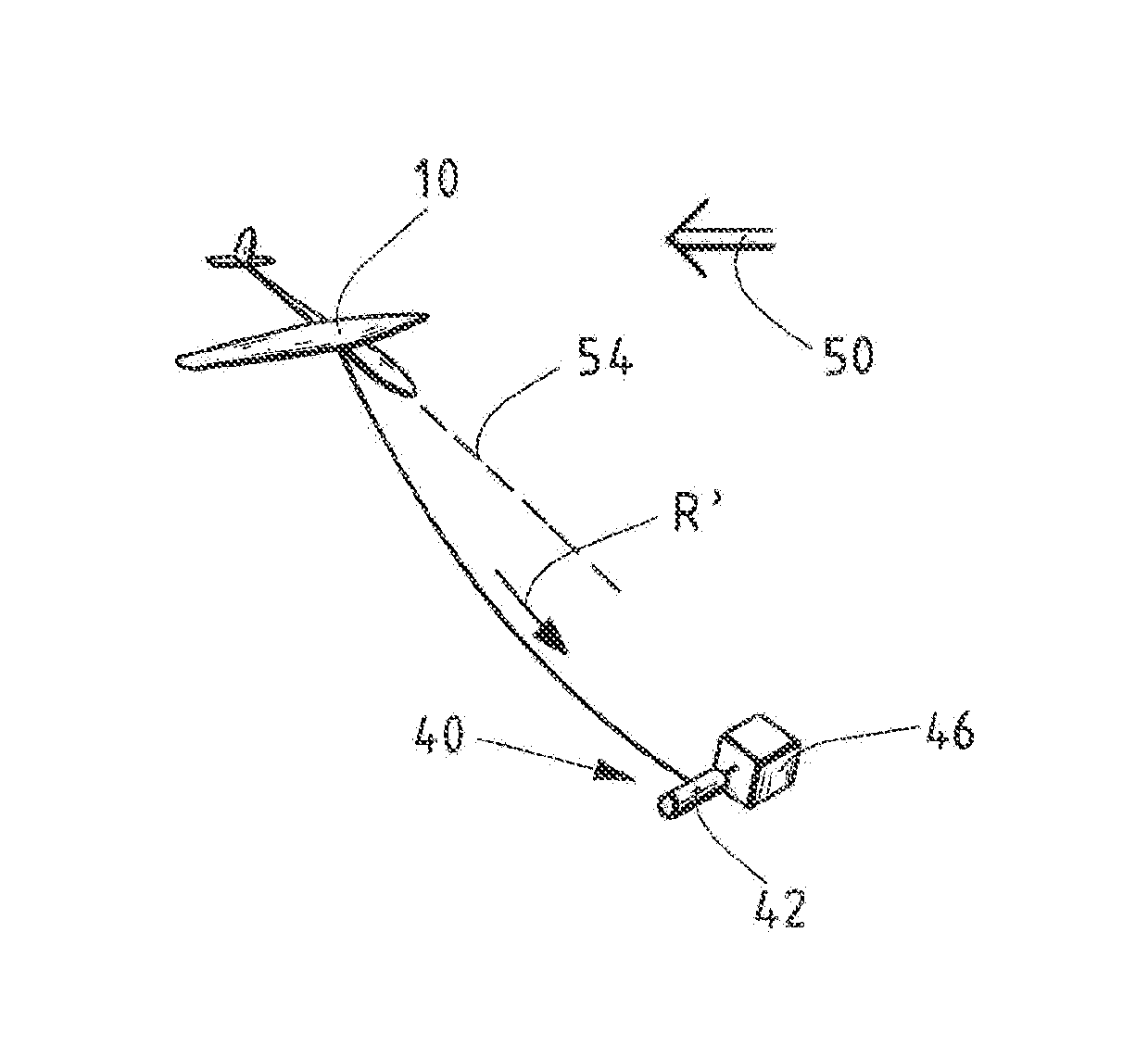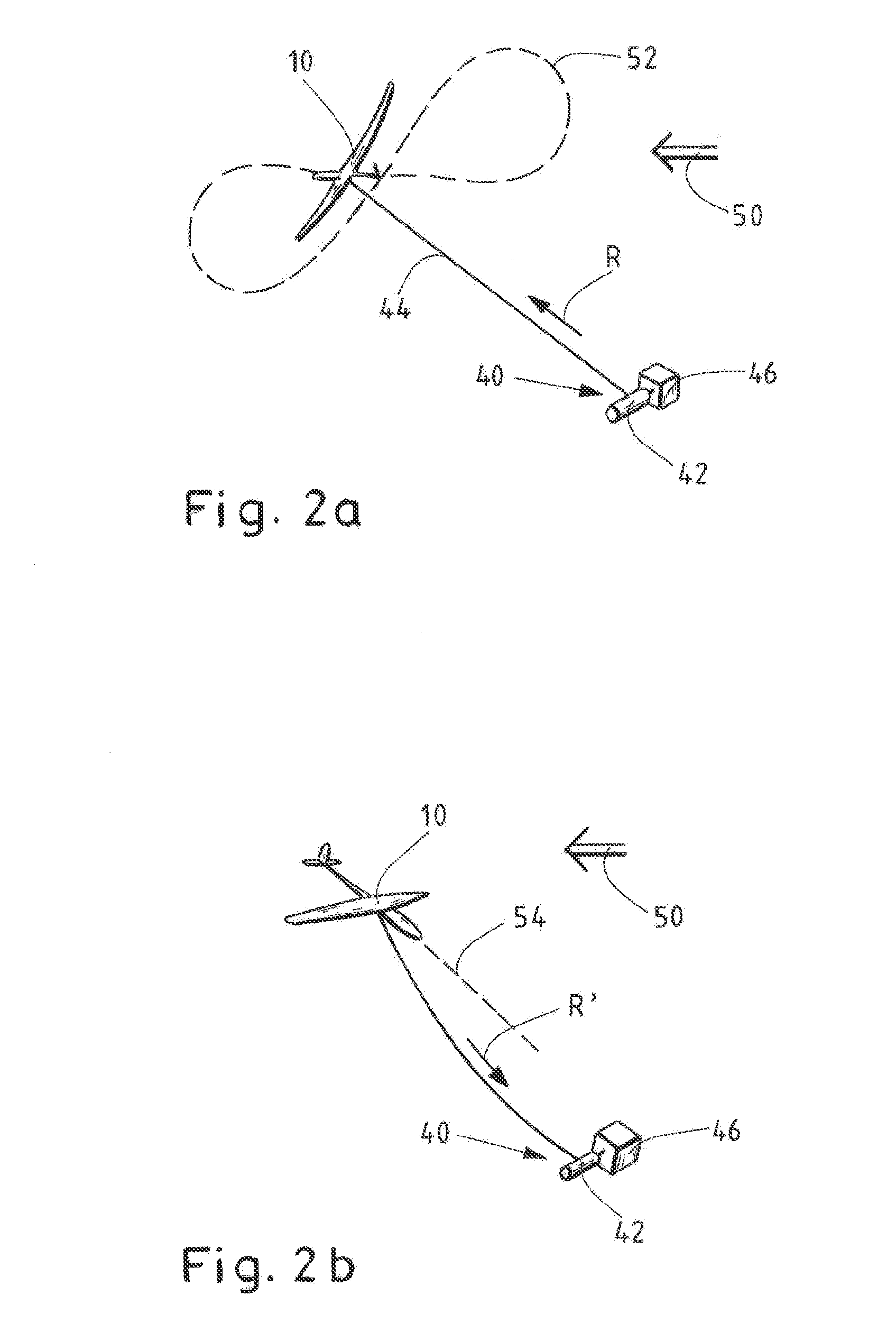Glider for airborne wind energy productions
a technology of airborne wind and electric power, which is applied in the direction of machines/engines, mechanical equipment, transportation and packaging, etc., to achieve the effects of reducing the total weight of the glider, reducing the aerodynamic resistance or drag, and high aerodynamic li
- Summary
- Abstract
- Description
- Claims
- Application Information
AI Technical Summary
Benefits of technology
Problems solved by technology
Method used
Image
Examples
Embodiment Construction
[0053]FIG. 1 shows an exemplary embodiment of a glider 10 for electric power production from wind 50 according to the invention.
[0054]The glider 10 is designed as a fixed wing aircraft comprising a fuselage, a main wing 14, a tailplane 16 and control surfaces 20, 22, 24. Also depicted in FIG. 1 are the longitudinal axis 32, the lateral axis 34 and the vertical axis 36, which meet at the center of gravity of the glider 10 and which constitute the intrinsic coordinate system of the glider 10.
[0055]In the example shown, the fuselage comprises a tube constructed from fiber reinforced composite material as mechanical backbone 11 between the main wing 14 and the tailplane 16 and a nacelle 13, which is mounted in front of the main wing 14.
[0056]The main wing 14 can for instance be constructed from a single wing, as in the embodiment depicted in FIG. 1. However, alternative designs, for instance with a separate main wing 14 on either side of the fuselage are within the scope of the inventio...
PUM
 Login to View More
Login to View More Abstract
Description
Claims
Application Information
 Login to View More
Login to View More - R&D
- Intellectual Property
- Life Sciences
- Materials
- Tech Scout
- Unparalleled Data Quality
- Higher Quality Content
- 60% Fewer Hallucinations
Browse by: Latest US Patents, China's latest patents, Technical Efficacy Thesaurus, Application Domain, Technology Topic, Popular Technical Reports.
© 2025 PatSnap. All rights reserved.Legal|Privacy policy|Modern Slavery Act Transparency Statement|Sitemap|About US| Contact US: help@patsnap.com



